belt JEEP WRANGLER 2006 Owners Manual
[x] Cancel search | Manufacturer: JEEP, Model Year: 2006, Model line: WRANGLER, Model: JEEP WRANGLER 2006Pages: 1472, PDF Size: 12.64 MB
Page 116 of 1472

When removing the 2 front screws just rearward of
the doors, make sure that the nut does not fall into
the seat belt retractor. Grasp the nut to prevent this
from occurring.
NOTE: On a dual top vehicle, the two rear and center
nuts are retained onto the bodyside.
4. Open both doors.
5. Open tailgate all the way to ensure clearance of the
rear window glass. Lift rear window glass.
3
Page 135 of 1472
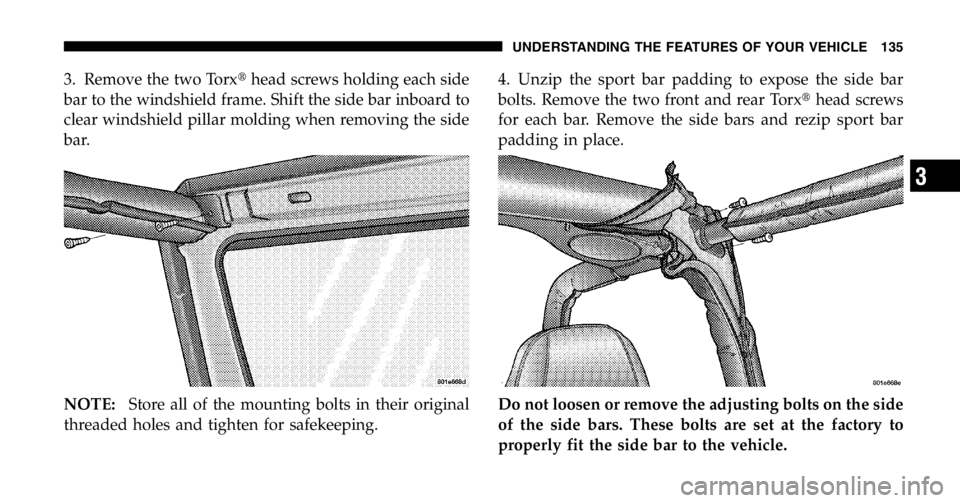
Air Conditioner Maintenance
For best possible performance, your air conditioner
should be checked and serviced by an Authorized Dealer
at the start of each warm season. This service should
include cleaning of the condenser fins and a performance
test. Drive belt tension should also be checked at this
time.WARNING!
Page 175 of 1472

you will be carrying children too small for adult-size
belts, your seat belts can also be used to hold infant and
child restraint systems.
Please pay close attention to the information in this
section. It tells you how to use your restraint system
properly to keep you and your passengers as safe as
possible.
WARNING!
In a collision, you and your passengers can suffer
injuries, including fatalities, if you are not properly
buckled up. You can strike the interior of your
vehicle or other passengers, or you can be thrown out
of the vehicle. Always be sure you and others in your
vehicle are buckled up properly.
Page 180 of 1472

A frayed or torn belt could rip apart in a collision
and leave you with no protection. Inspect the belt
system periodically, checking for cuts, frays, or loose
parts. Damaged parts must be replaced immediately.
Do not disassemble or modify the system. Seat belt
assemblies must be replaced after a collision if they
have been damaged (bent retractor, torn webbing,
etc.).
2
Page 181 of 1472
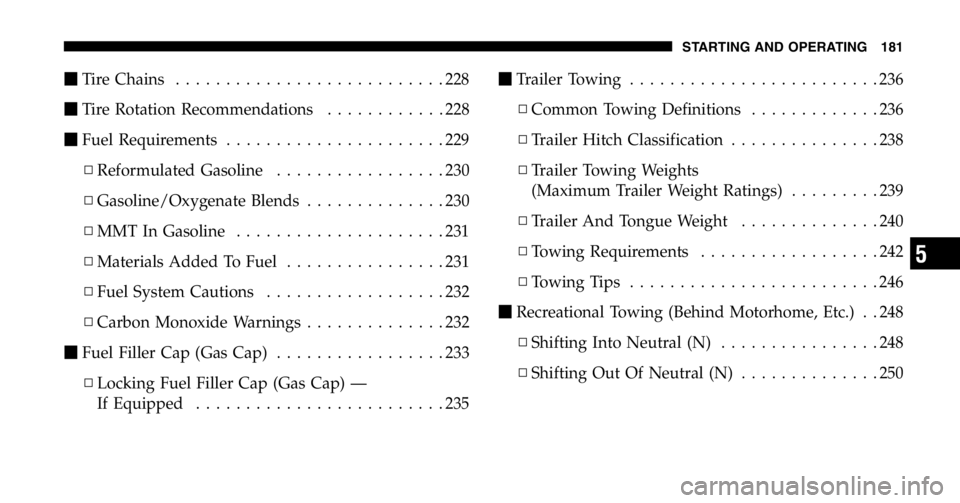
Seat Belts And Pregnant Women
We recommend that pregnant women use seat belts
throughout their pregnancy. Keeping the mother safe is
the best way to keep the baby safe.
Pregnant women should wear the lap part of the belt
across the thighs and as snug across the hips as possible.
Keep the belt low so that it does not come across the
abdomen. That way the strong bones of the hips will take
the force if there is a collision.
Seat Belt Extender
If a seat belt is too short, even when fully extended and
when the adjustable upper shoulder belt anchorage (if
equipped) is in its lowest position, your dealer can
provide you with a seat belt extender. This extender
should be used only if the existing belt is not long
enough. When it is not required, remove the extender
and store it.
WARNING!
Using a seat belt extender when not needed can
increase the risk of injury in a collision. Only use
when the seat belt is not long enough when it is
worn low and snug, and in the recommended seating
positions. Remove and stow the seat belt extender
when not needed.
Page 190 of 1472
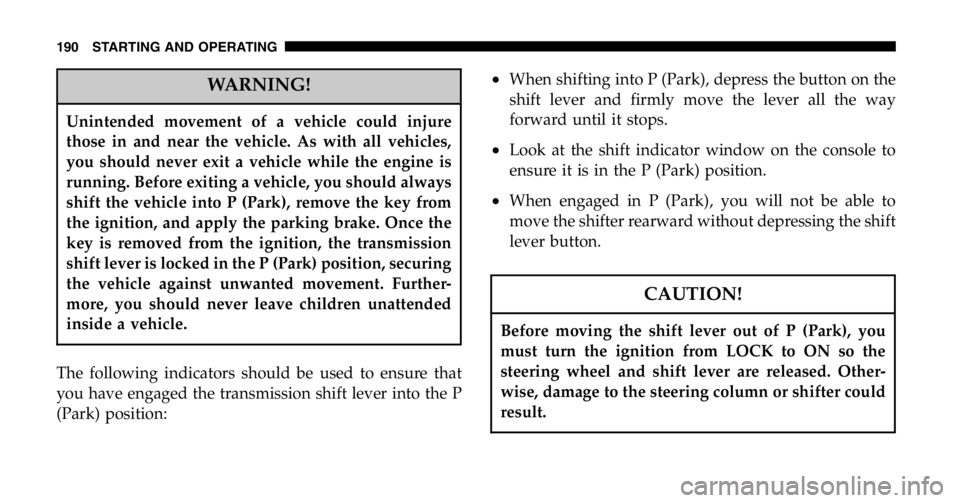
In a collision, an unrestrained child, even a tiny
baby, can become a missile inside the vehicle. The
force required to hold even an infant on your lap can
become so great that you could not hold the child, no
matter how strong you are. The child and others
could be badly injured. Any child riding in your
vehicle should be in a proper restraint for the child’s
size.
Infants and Small Children
There are different sizes and types of restraints for
children from newborn size to the child almost large
enough for an adult safety belt. Always check the child
seat owner’s manual to ensure that you have the right
seat for your child. Use the restraint that is correct for
your child.
•The rearward-facing infant carrier is for babies weigh-
ing up to about 20 lbs (9 kg), and one year old or more.
The infant restraint must NEVERbe used in the front
seat of a vehicle with a front passenger airbag unless
the airbag is turned off. An airbag deployment could
cause severe injury or death to infants in this position.
The infant carrier is held in the vehicle by the lap belt,
lap/shoulder belt, or the LATCH child restraint an-
chorage system.
•Children under one year of age should continue to ride
in a rear-facing infant seat, even if they weigh more
than 20 lbs (9 kg). A “convertible” child seat, one that
is designed to be used either rearward-facing or
forward-facing, should be used for children who are
too heavy for the infant carrier, but who are too young
to face forward in the vehicle.
•The forward-facing child seat is for children from
about 20–40 lbs (9–18 kg), and more than one year old.
THINGS TO KNOW BEFORE STARTING YOUR VEHICLE 35
2
Page 191 of 1472
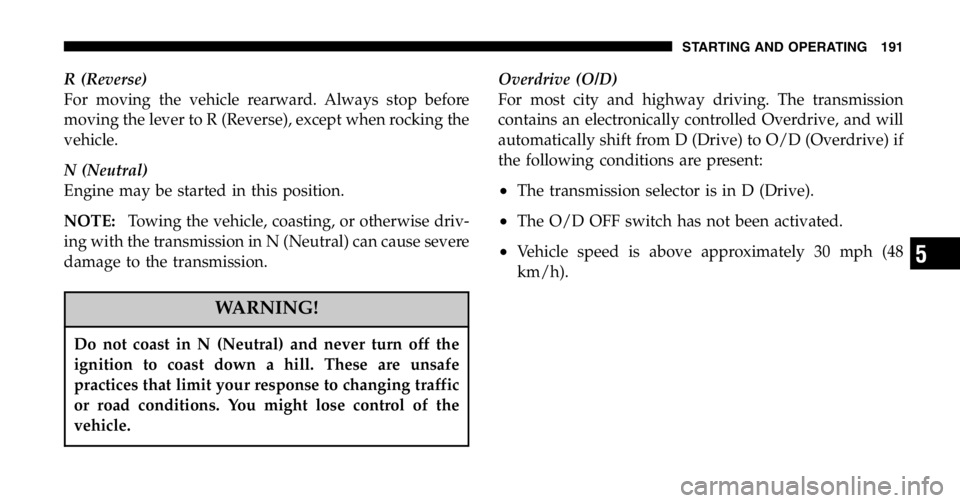
The child seat is held in the vehicle by the lap belt,
lap/shoulder belt, or the LATCH child restraint an-
chorage system.
•The belt-positioning booster seat is for children weigh-
ing more than 40 lbs (18 kg), but who are still too small
to fit in the vehicle’s seat belts properly. If the child
cannot sit with knees bent over the seat cushion while
the child’s back is against the seat back, they should
use a belt-positioning booster seat. The child and
booster seat are held in the vehicle by lap/shoulder
belt. (Some booster seats are equipped with a front
shield and are held in the vehicle by the lap portion or
lap belt.)
•For additional information refer to www.seatcheck.org
or call 1-866-SEATCHECK.
WARNING!
Page 198 of 1472

An incorrectly anchored tether strap could lead to
increased head motion and possible injury to the
child. Use only the anchor positions directly behind
the child seat to secure a child restraint top tether
strap.
Children Too Large for Booster Seats
Children who are large enough to wear the shoulder belt
comfortably, and whose legs are long enough to bend
over the front of the seat when their back is against the
seat back should use the lap/shoulder belt in a rear seat.
•Make sure that the child is seated upright in the seat.
•The lap belt portion should be low on the hips and as
snug as possible.
2
Page 212 of 1472
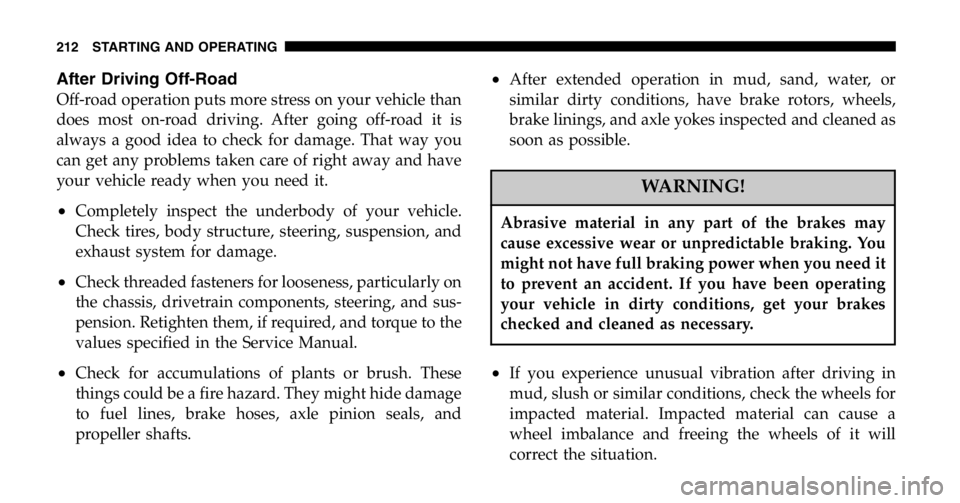
Adjusting a seat while the vehicle is moving is
dangerous. The sudden movement of the seat could
cause you to lose control. The seat belt might not be
properly adjusted and you could be injured. Adjust
any seat only while the vehicle is parked.
3
Page 214 of 1472

Do not ride with the seatback reclined so that the
shoulder belt is no longer resting against your chest.
In a collision you could slide under the seat belt and
be seriously or even fatally injured. Use the recliner
only when the vehicle is parked.
3